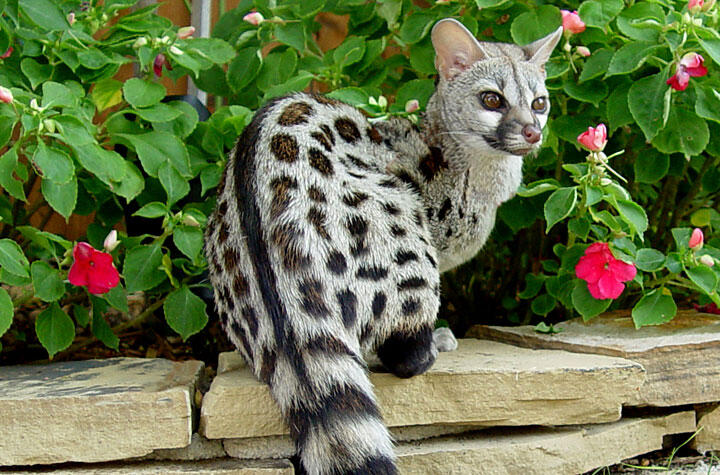Genet : The Climber of the Night

🌿 All About the Genet: The Spotted Climber of the Night
The genet is a small, slender mammal with a long, banded tail and a coat covered in beautiful spots. Although they look a bit like cats, genets are not felines—they belong to the family Viverridae, making them more closely related to civets and mongooses. These graceful and secretive animals are mostly found in Africa, although one species (the common genet) can also be seen in parts of southern Europe.
🐾 Appearance & Characteristics
Genets have a sleek, cat-like body, usually about 40–60 cm (16–24 inches) long, with an equally long tail. Their fur is soft and short, typically pale grey or yellowish, decorated with dark spots along the body and black rings on the tail. Their large ears, narrow faces, and sharp, retractable claws give them an alert and agile appearance—perfectly suited for their arboreal and nocturnal lifestyle.
🌍 Habitat & Distribution
Most genets are native to Sub-Saharan Africa, where they thrive in forests, savannas, and even near human settlements. The Common Genet (Genetta genetta) is unique for also being found in parts of Spain, Portugal, and France—introduced centuries ago, likely by humans. Genets are highly adaptable and can live in various environments as long as there is access to shelter, food, and cover.

🌙 Behavior & Lifestyle
Genets are nocturnal and solitary, meaning they are active at night and prefer to live alone. They are excellent climbers and often spend their time in trees, although they hunt and travel on the ground as well. Their large eyes and sharp senses make them skilled nighttime hunters.
They are also quite territorial, marking their home ranges with scent glands. During the day, they sleep in tree hollows, rock crevices, or abandoned burrows.
🍗 Diet
Genets are carnivorous omnivores, feeding on a varied diet that includes insects, small mammals, birds, reptiles, eggs, and fruit. They are opportunistic feeders, which helps them survive in a range of habitats. Their agility and stealth make them very effective hunters, especially for small prey.
🐣 Reproduction
Female genets give birth to 1–4 kittens after a gestation period of about 10–11 weeks. The young are born in a hidden den and are initially blind and helpless. They open their eyes after about ten days and begin exploring and eating solid food within a month. By the time they are 3–5 months old, they are usually independent.

🦺 Relationship with Humans
Genets are generally shy and elusive, avoiding human contact. However, in some regions, especially in rural parts of Africa and Europe, they have been known to visit farms and gardens in search of rodents and insects. Despite this, they are rarely considered pests and are sometimes even welcomed for their role in controlling vermin.
In some cultures, genets have symbolic meaning or are occasionally kept as exotic pets—though their wild nature makes them challenging to tame.



